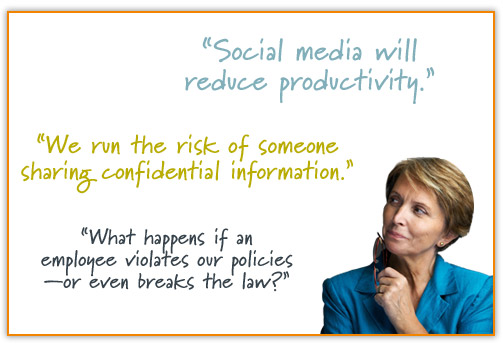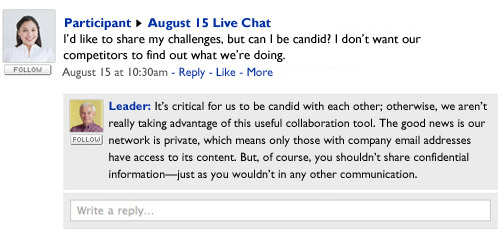
Social media is a great way to engage employees, connect remote workers and encourage collaboration. Yet it can be tricky to get buy-in, when leaders have concerns like:

But have no fear; it is possible to make the case for social media and gain support from senior leaders. To find out how, we used our internal Yammer network to solicit ideas from our Davis & Company colleagues. Here’s what they suggested:
Know the facts
To make the case for a new social media platform, it’s important to do your homework. For example:
- Research external studies and use data to show how leading companies use social media to build employee engagement.
- Analyze employee demographics in your organization. If a significant percentage of your employees are in their 20s, for instance, you know those employees value social media and are comfortable using the tools.
- Conduct focus groups to understand employees’ social media needs. The most effective program concentrates on the employee, not the technology, so demonstrate how your proposed approach will solve a workplace need.
Create a controlled experience
Senior leaders are often nervous because social media seems so open-ended: Once it’s launched, it runs 24/7. Get started by asking a leader to host a one-hour live chat. Here’s how it works: the leader posts a topic, employees ask questions and the leader responds—all in real time.
Here’s an excerpt from a client’s live chat:

Pilot an initiative
Once you’ve practiced using one-hour increments, expand your efforts by developing a pilot. Start small; take baby steps toward your goal. By introducing social media in one group, location or function, you can test your program before introducing it broadly. Report on results to show senior leadership that social media can, indeed, work here.



